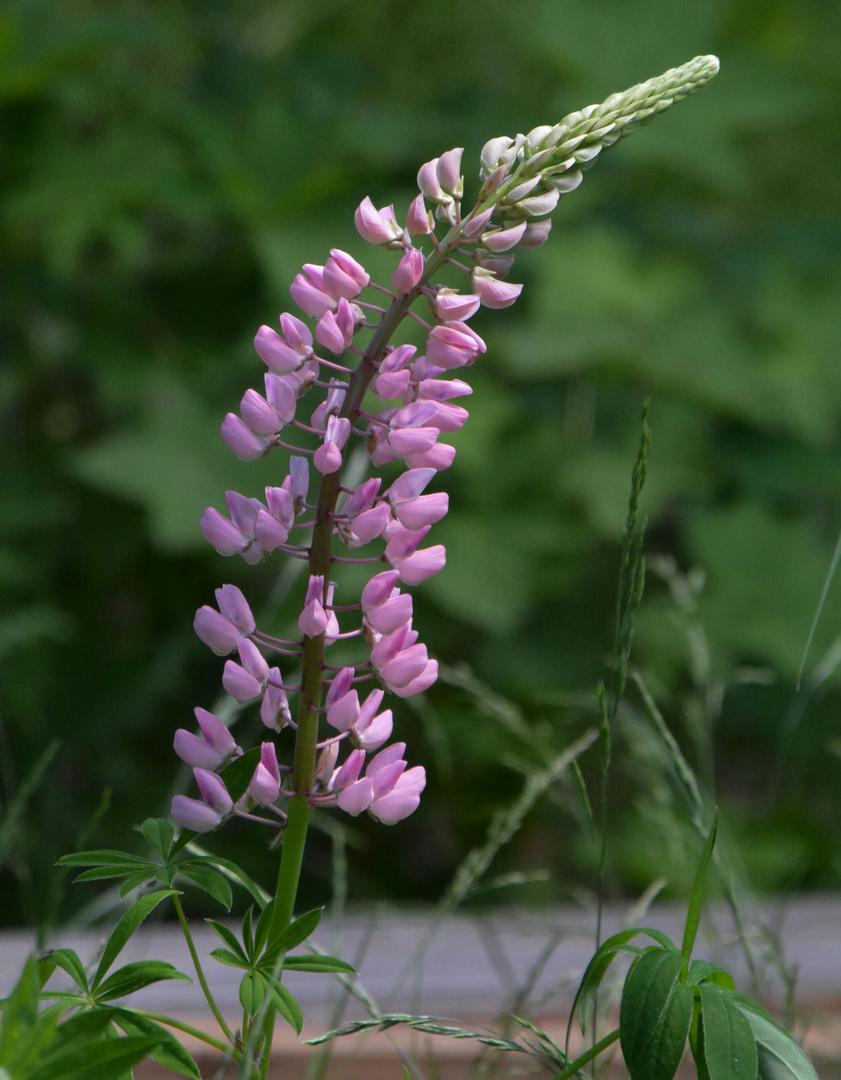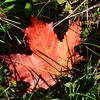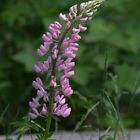Lupinus polyphyllus
Lupinus polyphyllus
From Wikipedia, the free encyclopedia
Jump to navigationJump to search
Lupinus polyphyllus
Lupinus polyphyllus.JPG
Scientific classification
Kingdom: Plantae
(unranked): Angiosperms
(unranked): Eudicots
(unranked): Rosids
Order: Fabales
Family: Fabaceae
Subfamily: Faboideae
Tribe: Genisteae
Subtribe: Lupininae
Genus: Lupinus
Subgenus: Platycarpos
Species: L. polyphyllus
Binomial name
Lupinus polyphyllus
Lindl.
Lupinus polyphyllus (large-leaved lupine, big-leaved lupine, many-leaved lupine,[1] blue-pod lupine,[2] or, primarily in cultivation, garden lupin) is a species of lupine (lupin) native to western North America from southern Alaska and British Columbia east to Quebec, and western Wyoming, and south to Utah and California. It commonly grows along streams and creeks, preferring moist habitats.
It is a perennial herbaceous plant with stout stems growing to 1.5 metres (4.9 ft) tall. The leaves are palmately compound with (5-) 9-17 leaflets 3–15 centimetres (1.2–5.9 in) long. The flowers are produced on a tall spike, each flower 1–1.5 centimetres (0.39–0.59 in) long, most commonly blue to purple in wild plants. The flowers are mostly visited by bumblebees.[3] The polyphyllus variety in particular make up a great number of the hybrids which are generally grown as garden lupines, they can vary dramatically in colours. The majority of lupines do not thrive in rich heavy soils, and often only live for a matter of years if grown in such places, because crown contact with manure or rich organic matter encourages rotting.
This lupine may represent a significant threat to the survival of the endangered Karner blue butterfly, due to its ease of hybridization with the Karner's food plant, Lupinus perennis, the sundial lupine.[4][5] Some sources argue that much commercial sundial lupine seed is already questionable for the Karner due to hybridization. Additionally, incompatible lupines continue to be introduced by humans into places where the Karner lives or once lived





















homwico 13/06/2020 20:59
Schön gezeigt die Blüte.LG homwico
norma ateca 13/06/2020 19:57
One very nice lupinus showing your picture warm regards Norma